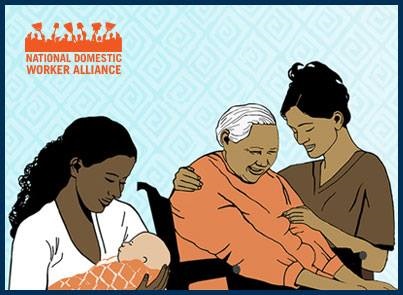“A hundred years ago [Benjamin] Franklin said that six hours a day was enough for anyone to work and if he was right then, two hours a day ought to be enough now.”
Lucy Parsons spoke those words in 1886, shortly before the execution of her husband, Albert. The two had been leaders in the eight-hour-day movement in Chicago, which culminated in a general strike, a rally, and the throwing of a bomb into the crowd in Haymarket Square.
Women like Lucy Parsons were at the heart of the struggle for the shorter work week, an integral part of the labor movement until the end of the Depression, which saw the forty-hour week enshrined in law after the defeat of Hugo Black’s thirty-hour-week bill. As Kathi Weeks writes in “Hours for What We Will: Work, Family and the Movement for Shorter Hours” in Feminist Studies 35, after World War II, the demand for shorter hours was increasingly associated with women workers, and was mostly sidelined as the forty-hour week became an institution.
“Not only wages — I am thinking here of the ‘female wage’ and the ‘family wage’ — but hours, too, were constructed historically with reference to the family,” Weeks notes. The eight-hour day and five-day week presumed that the worker was a man supported by a woman in the home, and it shaped expectations that his work was important and should be decently paid, while women’s work was not really work at all (even though, as Weeks notes, the gender division of labor was supported by some paid domestic work, done largely by women of color). The postwar labor movement focused on overtime pay and wages, leaving the women’s issue of shorter hours mostly forgotten.

So we see workers striking for more hours as well as better pay, rather than demanding that they be paid a living wage for those few hours. The eight-hour movement, it should be remembered, demanded eight hours’ work for ten hours’ pay; a lessening of working time without a corresponding decrease in wages.
In her study of hospital nursing, Catheters, Slurs, and Pickup Lines, Lisa Ruchti points out that women have historically been idealized as “naturally (i.e., biologically) more domestic, submissive, pious, and pure than men,” and that nursing and teaching were held out to them as careers that allowed them to exercise their natural talents. Dana Goldstein has written about how the romanticization of women’s natural goodness was used to mask the real reason that women teachers were sought when the US public school system was founded: they’d work for lower wages.
It is a surprise to see Walmart workers striking at all; Moreton notes that the way the company played up its “values” made women hesitant to complain about their employer. Paula England, Nancy Folbre and Carrie Leana point out in For Love And Money that workers who identify with their company’s mission earn less. This is even more obvious in the caring professions, where workers are directly responsible for the well-being and health or education of others.
“The notion that care work should be provided for love rather than money has often served to legitimize gender inequality,” argue England, Folbre, and Leana. Women are the ones expected to do the caring—raising children, helping elderly parents, and perhaps supporting both at the same time. Work norms have been shaped by this belief, pushing women into jobs that uphold gender stereotypes. Ruchti found that conventional definitions of femininity tend to obscure the fact that care is work by defining it as an intrinsic characteristic of women.
This romanticized view of care workers deflects attention from the low wages and long hours that caregivers work, and serves to justify those low wages.
Child care and adult care providers are written off as “babysitters” and “companions” who don’t need wage protections; a report from the National Domestic Workers Alliance in 2012 detailed rampant abuses of live-in nannies and domestic workers, yet California governor Jerry Brown vetoed a Domestic Workers’ Bill of Rights. These workers are on the low end of the spectrum when it comes to pay and respect, even among other care workers. K-12 teachers and nurses are professionals who make professional salaries, need specialized education, and often have union contracts. Child care and adult care providers, by contrast, have more in common with the rest of the low-wage workforce. They often work part-time and not year-round, have fewer protections, and are more likely to be immigrants and people of color.
Ruchti notes that researchers have found discrimination within nursing and care work against women of color, who are seen as less professional and even more “naturally” caring than their white coworkers.
The strike is labor’s weapon of last resort: the ultimate refusal of work, the shutdown of production. But what does it mean to strike when “production” isn’t the production of widgets, cars, or even food, but care for children, the ill or disabled, or the elderly?
The strikes in 2012 by workers at Walmart and fast-food establishments weren’t intended to shut down operations; they were intended to shake up the bosses, establish solidarity, and build power among the workers. Longtime organizer Stephen Lerner and law student striker Emilie Joly, in separate interviews, both stressed the value of the strike as a freedom from work, creating time for busy workers to organize, rally, and speak to the press. It’s not just about shutting down production, in other words, but about laying claim to one’s own time.

In the rest of the capitalist workforce, workers are encouraged to be selfish, to push for their own advancement. Facebook COO Sheryl Sandberg has written a whole book telling women to demand more as individuals. But when care workers take collective action to demand better working conditions, they are shamed as selfish. “You should be taking care of the community!” pundits and politicians scold. “How dare you want better for yourself?”
Weeks warns of the dangers of sanctifying “women’s work” and the assumptions about women’s natural place and biological tendencies that comes with it, but what the Chicago teachers did, what nurses and home care aides do, is make their work visible. By stepping away from it, even briefly, they dissociate themselves from it and remind us that it is not work done simply out of love. Which brings us back to the beginning: to the need for a rekindled movement for shorter hours, a movement that will challenge our fixed ideas about what is work and who should do it, about the organization of domestic, reproductive, and care work.
In Weeks’ words, “The demand would be for more time not only to inhabit the spaces where we now find a life outside of waged work but also to create spaces in which to constitute new subjectivities, new work and nonwork ethics, and new practices of care and sociality.”





